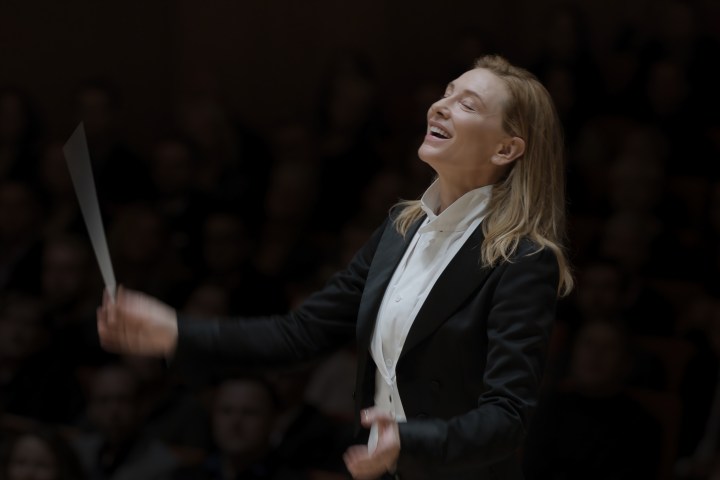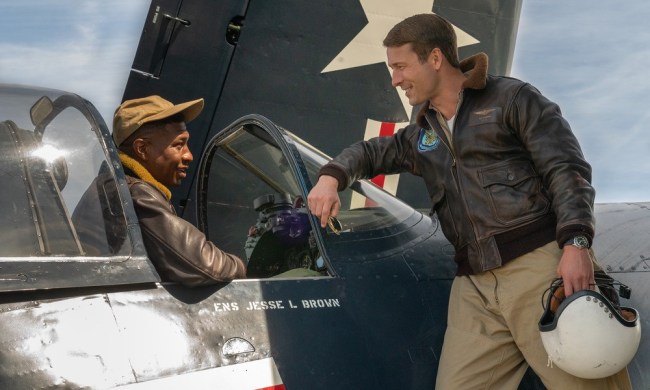Very few movies this year have received as much acclaim as TÁR. The new film from writer-director Todd Field is an ambitious and often captivating character study, one that dives headfirst into the niche world of classical music in order to tell a story that is both thought-provoking and surprisingly timely. As the film’s eponymous composer, Cate Blanchett turns in some of the best work of her career and, in doing so, gives one of the most impressive lead performances that audiences will likely see on-screen this year.
For his part, Field wisely surrounds Blanchett with a supporting cast comprised of capable performers, including Sophie Kauer, who makes her feature film acting debut in TÁR as Olga Metkina, a prodigious Russian cellist who catches the attention of Blanchett’s Lydia. While speaking recently about the film, Kauer, who is a cellist in real life, told Digital Trends, “I’m still amazed that people like [TÁR composer] Hildur Guðnadóttir and Cate agreed to work with me. I got to enter this whole new world and learn how to act from Cate and Todd.”
Below, Kauer opens up further about her experience making TÁR and reveals why she found it “empowering” to play a character as brusque and determined as Olga Metkina.

Note: This interview has been edited for length and clarity purposes.
Digital Trends: What was your initial reaction when you first read the script for TÁR?
Sophie Kauer: Todd is an incredibly gifted writer. It’s a shame that his script won’t be published as a book because there’s so much beautiful direction in there that, unfortunately, the audience will never know about. But I remember my first reaction was that I was so proud and touched that someone had gone through so much effort to write a film that features classical music so heavily and portrays it as this beautiful, glorious art form that people dedicate their lives to. The film acknowledges that the industry still has a lot of relevance today, while also touching on very sensitive issues and practices that need to be amended within it.
I also remember that I found it really hard to talk to anyone after reading it. I just had to sit for like two hours in my room thinking about it because the film raises all these questions and you go through such a journey with all these characters. What’s amazing about Todd’s filmmaking is that all his characters are so multi-dimensional.
It’s not like one character is good and one character is bad. It’s not like that at all. It’s all left open to interpretation, and you can really make whatever you want of it. I just couldn’t quite believe that I had been cast and that I was being trusted with this project. I feel so lucky.

How were actually cast in the film?
I think Todd made life quite difficult for himself because he told me they looked at actresses for a long time prior to deciding to open the casting call to real-life cellists. He really wanted someone who understood the music industry, though, and someone who could actually play their instrument because all the recordings we did in the film are live recordings. It’s all really my playing. Nothing was done in post, unfortunately [laughs].
So they opened the casting call to all the music conservatoires and universities and I sent in some self-tapes and some videos of my playing. I had no expectations whatsoever, but then I got asked to do a zoom call with Todd. We worked on scenes for an hour or so, and I remember thinking, “Oh, this is cool. I can tell my kids or grandkids one day that I did a Zoom audition with Todd Field and all these casting agents.” I didn’t hear anything back right away after that, and that was completely fine because I knew that the chances of getting a role like this were slim to none.
But then I remember that they emailed me asking me to send a recording of the piece that I play in the film. I think I was really busy at the time because I’m still studying and I was really buried underneath exams. I just didn’t really understand how big the project was or expect to get it, so I said, “Oh, yeah, sorry, I’ll send them when I have time.” But then they rang me and said, “We really need you to send them now.”
I was in quarantine at the time, but I sent them a recording as soon as I got out of quarantine and, in my opinion, it was just not the best. It wasn’t to my standards, but for them, it was good enough. I’m still just amazed that people like Hildur Guðnadóttir and Cate agreed to work with me. I got to enter this whole new world and learn to act from Cate and Todd.
That’s not a bad way to break into the industry.
Exactly. It’s kind of hard to top, right? It was amazing. I learned so much and had the most amazing time. It was a huge challenge, for sure, but I feel like I’ve developed a lot as a result.

Because the film’s recordings were all done live, how much time did you have to practice for the performances in TÁR?
This was actually something that I was really surprised by. I thought we’d have loads of time, right? I thought that they’d spend loads of time recording everything and making sure everything was perfect, but that wasn’t the case. I think, because we had such limited time with the film’s orchestra, we ended up having very little rehearsal time.
All our takes were recorded either very late at night after a long day of filming or very early in the morning before I had a chance to warm up. We all had to play super hard pieces or super hard excerpts from pieces completely cold and nail it every time. That was really daunting for me.
Nowadays, I’m lucky that I’ve had a bit of experience playing as a soloist with an orchestra, but I was 19 when we started filming and there’s not that much that you can have achieved by that age in that respect. I’d also not had an in-person cello lesson for two years at that time because of the pandemic, so it was scary. I think we made it work, though, and it made the film all the more authentic. I feel like we managed to create a very authentic film, which hasn’t been done before, in my opinion, when it comes to the field of classical music.
What was it like getting to work with an actor like Cate Blanchett? Was your first scene with her that incredible lunch conversation you two have in the film?
No, but that scene was quite funny because I’m shoveling food in my mouth and speaking faster than I could swallow in it [laughs]. It was amazing to work with Cate, though. She’s a really, really kind and warm and supportive person, and she’s just so intelligent. She has so many amazing ideas, but she makes you feel very comfortable. My character can be quite rude to her character at times and, afterward, I would always be like, “I’m so sorry!”
The first scene we shot was actually the scene where she gives me the bear after I lose it, but that scene was also a bit different in the original script. I also started off by filming reaction shots while I was sitting in the orchestra, which was a nice way for me to ease into everything and learn how to react based on how close the camera is to my face. That was something that Cate actually explained to me.

It’s never revealed exactly how aware Olga is of what Lydia is doing or, at least, attempting to do. Was that something you talked about with Todd?
It’s great that you asked that question because that’s exactly the point of the film. Todd always creates these amazingly multi-dimensional characters, and we had a lot of conversations about Olga, her backstory, and what she’s thinking and feeling on a moment-to-moment basis. The great thing is that we never know whether Olga’s entirely aware of everything that’s happening, though, including whether she’s using it to her advantage or not.
But what I really like about her is that she pushes back. She doesn’t bend, you know? She decides that she’s not going to go along with certain things and she finds her own way through everything. You see very clearly when she decides, “I’m going to go my own way.”
It was really empowering to play a character like that. It was a lot of fun to play someone that lighthearted and to be so rude and not worry about the consequences. To just go for it and run down the stairs and scream with excitement was really, really fun. I miss Olga a lot, actually. She was a great character to live with throughout the months we spent filming.
Do you think Olga was trying to manipulate Lydia at all?
We kind of decided that we would never fully decide, you know? The beauty of the film is that it’s meant to be very unclear, and you’re meant to make your own mind up. I definitely think there are elements of her that are manipulative or calculating, but she may also be completely unaware of everything as a carefree young woman who’s trying to make her mark in her industry. We always thought about every possibility and all the different versions of Olga, and then we tried to incorporate all of them into her in the hopes that they would come across.
TÁR is now playing in select theaters. It expands nationwide on October 28.



